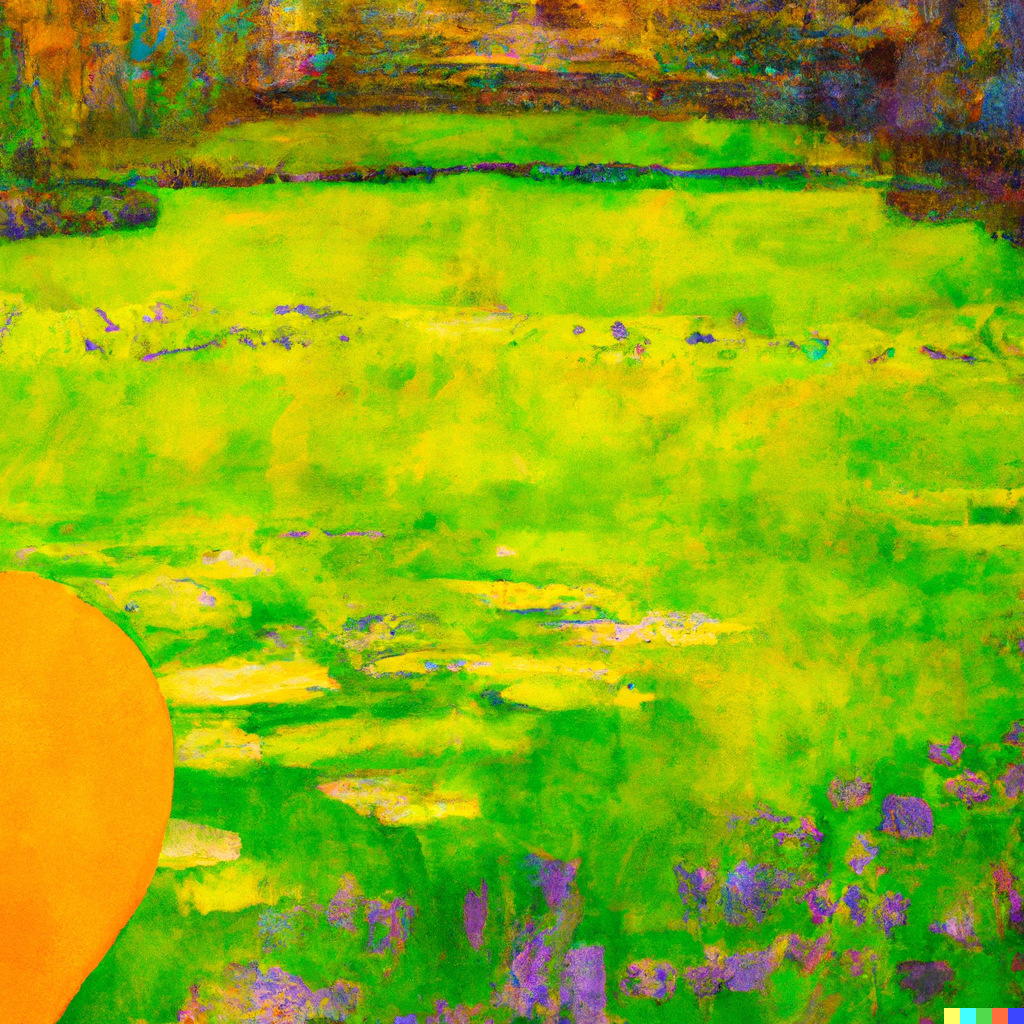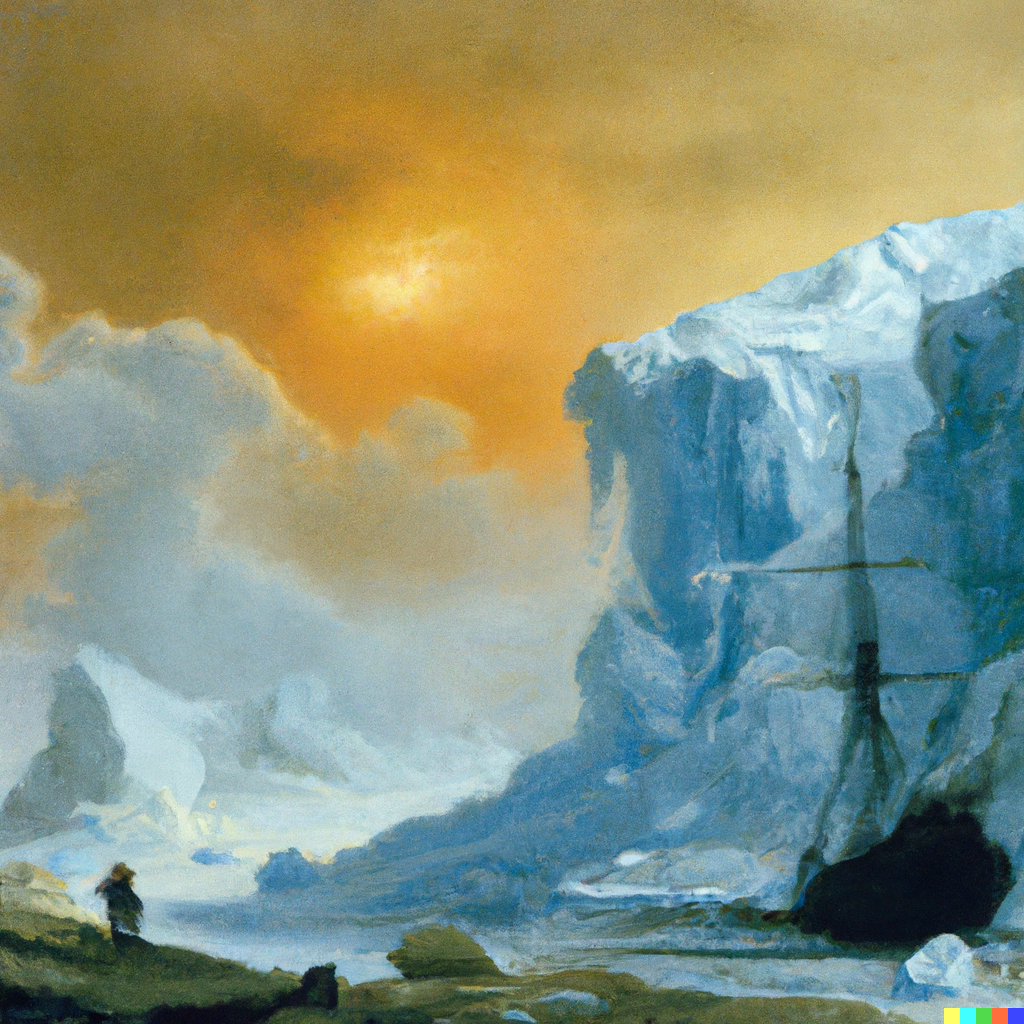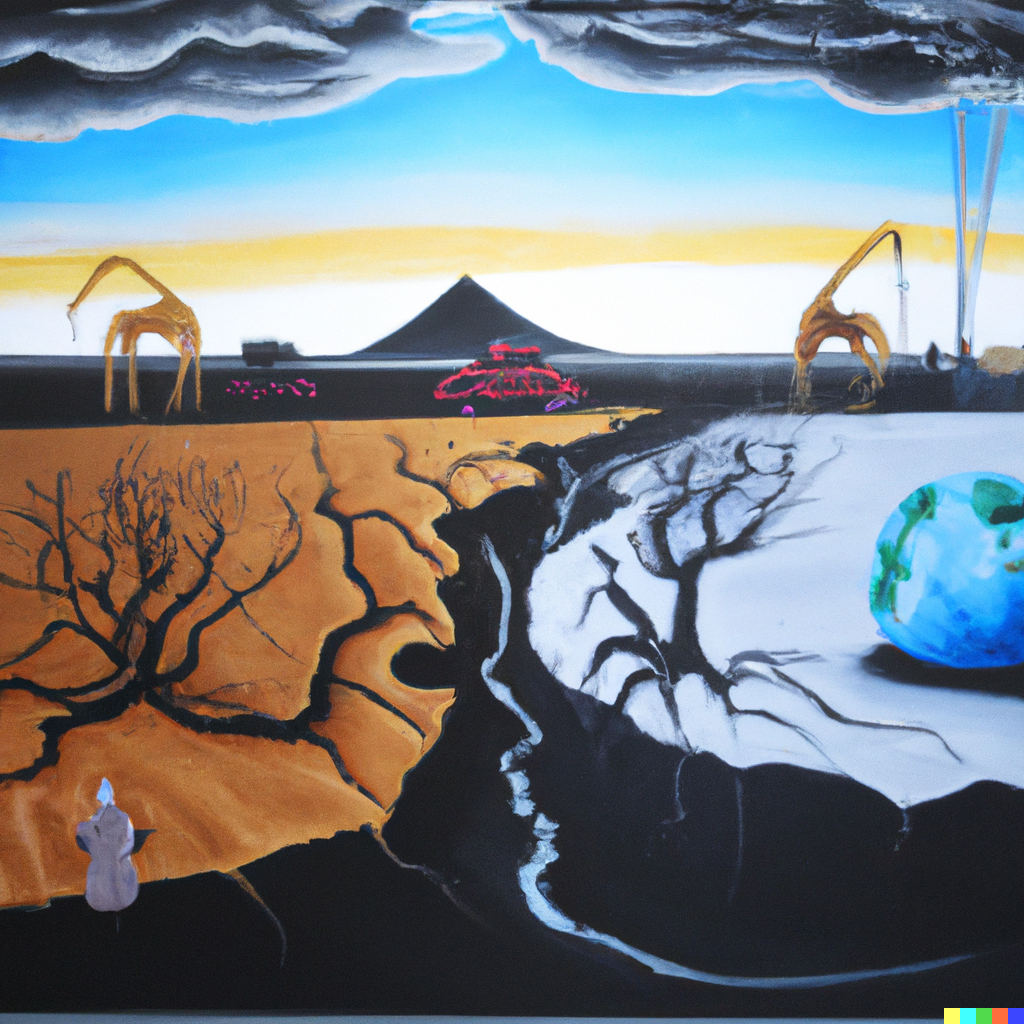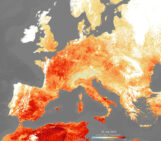
We are running out of time in fighting the effects of climate change. With the greenhouse gasses emissions steady, the planet is reaching warming levels that could cause some large ecosystems to tip in different states. A tipping point in the climate system refers to a threshold beyond which a small change in a particular variable can cause a significant and potentially irreversible change in the overall climate. These points can be found in various parts of the Earth’s climate system, such as the polar ice caps, oceans, and forests. Crossing a tipping point can lead to runaway warming, sea level rise, and other devastating impacts. While climate scientists are currently working to identify and understand these tipping points in order to better predict and mitigate the effects of climate change, their existence was basically unknown up to a few decades ago and therefore ignored by the most famous artists of the modern times.
It’s fascinating to imagine how some of the world’s most renowned painters, who are no longer with us, would have depicted the pressing issue of climate change tipping points. Would Van Gogh have captured the melting Arctic ice in a series of swirling blues and whites? Would Monet have focused on the changing colors of the seasons in a landscape affected by a shifting climate? I have asked Dall-E to perform the task: results are beautiful and inspiring.
One thing is certain, these master painters would have used their art to convey the emotions and complexities of the climate crisis in a way that words alone cannot. A gallery exhibition of their imagined works on this subject is therefore a powerful and thought-provoking experience. I hope that this gallery has brought the issue of climate change to life in a new way and has inspired me and you, the visitors of this gallery, to take action to protect our planet.
- The Sahara Greening by Claude Monet
The Sahara greening is a phenomenon that refers to the increase in vegetation and rainfall in the Sahara Desert, one of the driest regions on Earth. The French Impressionist painter Claude Monet is known for his stunning landscapes that capture the beauty and serenity of nature. He is often associated with his series of paintings of water lilies and the countryside around his home in Giverny. But in this imagined painting, Monet would be depicting a very different landscape, one that has been transformed by climate change. The painting shows the once barren desert landscape of the Sahara, now lush and green with trees and vegetation thriving. Monet’s signature style would bring a sense of nostalgia and familiarity to the painting, but the subject matter would be a powerful reminder of the impact of climate change on our planet.
- Dieback of the Amazon Rainforest By Pablo Picasso
Dieback of the Amazon rainforest is a phenomenon that refers to the gradual decline of the world’s largest rainforest. This decline is caused by a combination of factors, including climate change, deforestation, and human activities. The Amazon rainforest is considered a vital part of the Earth’s climate system, as it plays a crucial role in regulating the global climate and is home to an incredible diversity of plant and animal species. The dieback of the Amazon rainforest is a clear indication of how human activities can have a devastating impact on the Earth’s climate and ecosystems. In this context, the famous painter Pablo Picasso could have imagined a painting that depicts the chaotic and destructive consequences of this tipping point in his signature cubist style.
- Abrupt changes of the Atlantic Oceanic Circulation by Vassily Kandinsky
The Atlantic Oceanic Circulation is a system of ocean currents that plays a crucial role in regulating the Earth’s climate by transporting heat and moisture around the globe. The circulation is driven by differences in water density, which is influenced by factors such as temperature and salinity. Abrupt changes in the Atlantic Oceanic Circulation can occur due to climate change, and can have significant impacts on weather patterns and regional climates. This is considered as a tipping point in the Earth’s climate system. In this context, Vassily Kandinsky, the famous Russian painter, could have imagined a painting that depicts the impact of abrupt changes in the Atlantic Oceanic Circulation in his signature abstract style. The painting would be a powerful and thought-provoking representation of the complexity and interconnectedness of the Earth’s climate system, and a reminder of the importance of understanding and protecting our planet.
- Melting of the Greenland Ice by William Turner
The Melting of the Greenland Ice is a phenomenon that refers to the gradual loss of ice from the Greenland ice sheet due to climate change. The melting of the ice sheet can have significant impacts on sea level rise and regional climates. This is considered as a tipping point in the Earth’s climate system. In this context, William Turner, the famous English painter, could have imagined a painting that depicts the impact of the melting of the Greenland ice in his signature Romantic style. The painting would be a powerful and thought-provoking representation of the beauty and fragility of the Earth’s natural systems, and a reminder of the importance of taking action to mitigate the effects of climate change. The painting could depict the melting ice sheet and its impact on sea level rise, the colors would be striking and emotive, with shades of blues and whites, creating a sense of vastness and power but also distress and loss.
- Loss of Permafrost by Salvador Dali
The Loss of the Permafrost is a phenomenon that refers to the gradual thawing of the permanently frozen soil that covers large parts of the Arctic. The permafrost contains large amounts of carbon, which can be released into the atmosphere as it thaws, contributing to climate change. The loss of permafrost can also have significant impacts on the northern ecosystems and infrastructure. This is considered as a tipping point in the Earth’s climate system. In this context, Salvador Dali, the famous Spanish painter, could have imagined a painting that depicts the impact of the loss of permafrost in his signature surrealist style. The painting would be a powerful and thought-provoking representation of the bizarre and unexpected consequences of climate change. The painting could depict melting permafrost and its impact on arctic ecosystem and the melting ice releasing gases, with Dali’s iconic melting clocks and other surreal elements, creating a sense of disorientation and confusion.
- The Ozone hole deepening by Vincent Van Gogh
The Ozone hole is a phenomenon that refers to the depletion of the ozone layer, a protective layer in the Earth’s stratosphere that shields life on Earth from the sun’s harmful ultraviolet (UV) radiation. The hole is caused by the release of certain human-made chemicals, such as chlorofluorocarbons (CFCs) and halons, which have damaged the ozone layer. The deepening of the ozone hole can have significant impacts on human health and the environment. This is considered as a tipping point in the Earth’s climate system. In this context, Vincent Van Gogh, the famous Dutch painter, could have imagined a painting that depicts the impact of the deepening of the ozone hole in his signature post-impressionist style. The painting would be a powerful and thought-provoking representation of the beauty and fragility of the Earth’s natural systems, and a reminder of the importance of taking action to protect the ozone layer and the planet. The painting could depict the sky and its colors, representing the UV radiation reaching the earth, and the colors would be striking and emotive, with shades of oranges and yellows, creating a sense of warmth but also distress and danger.










